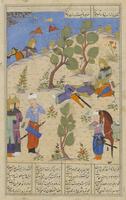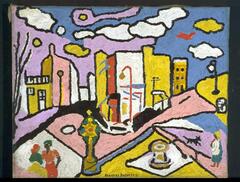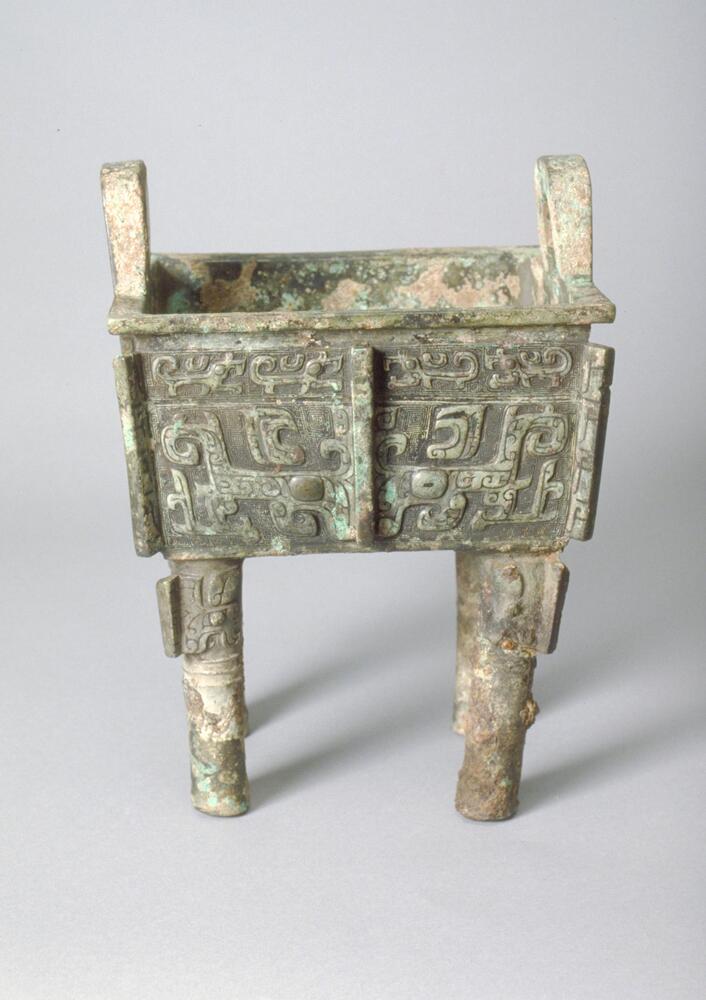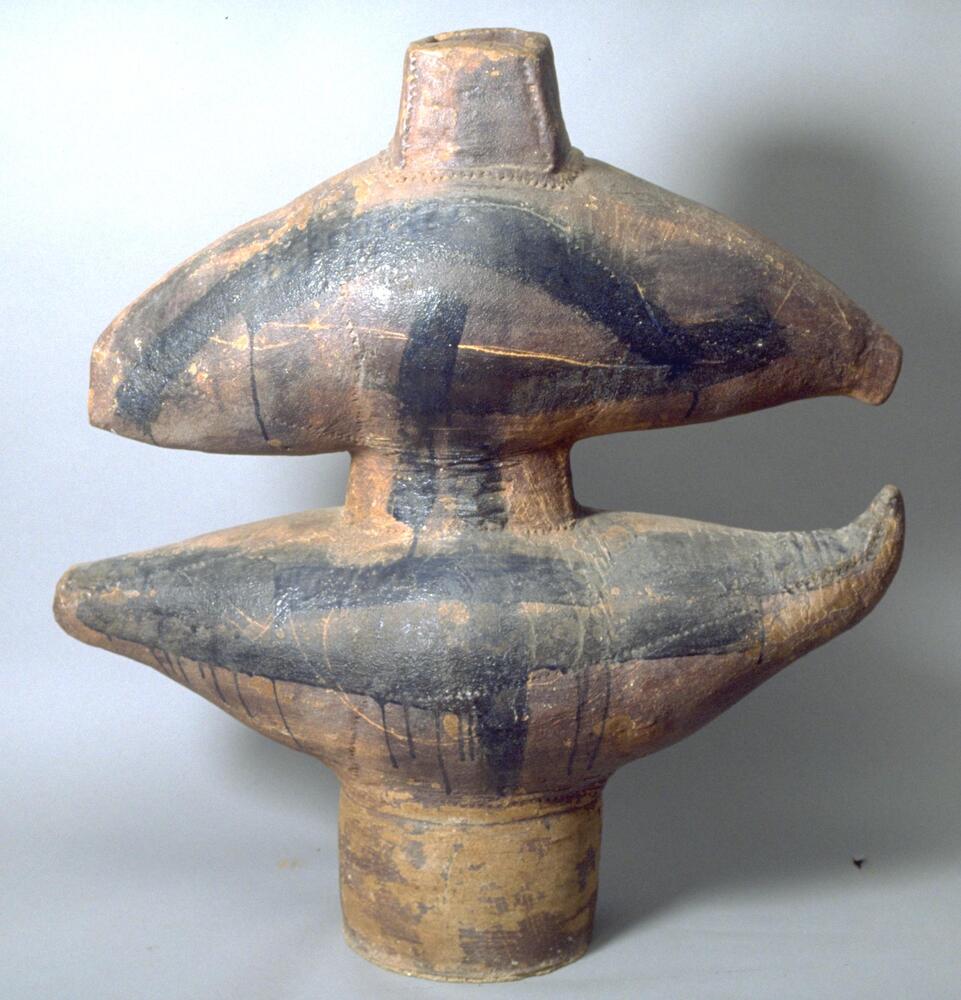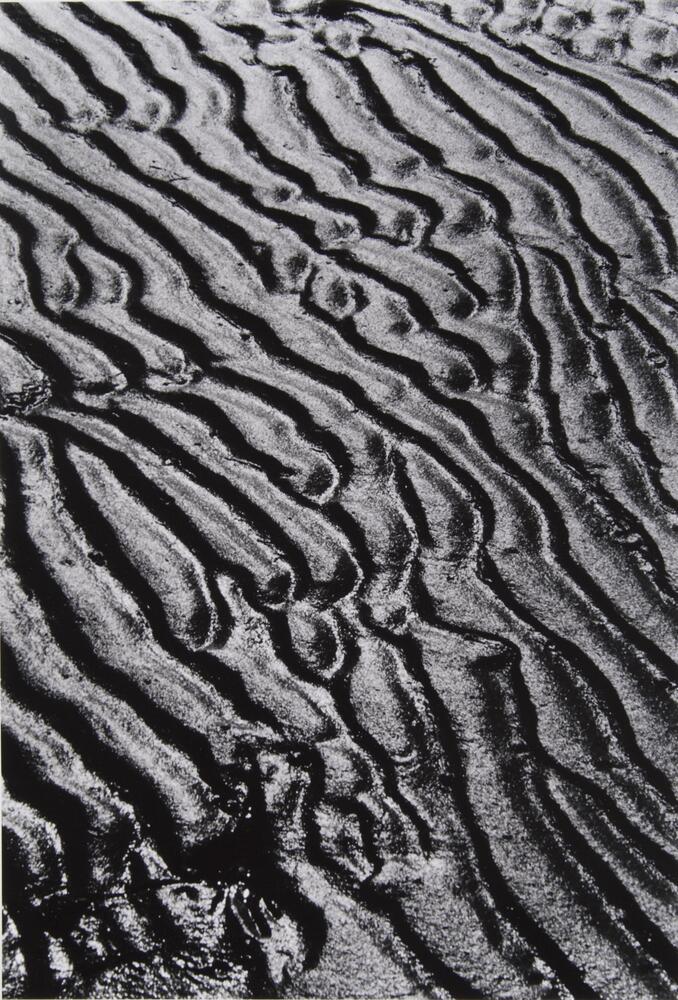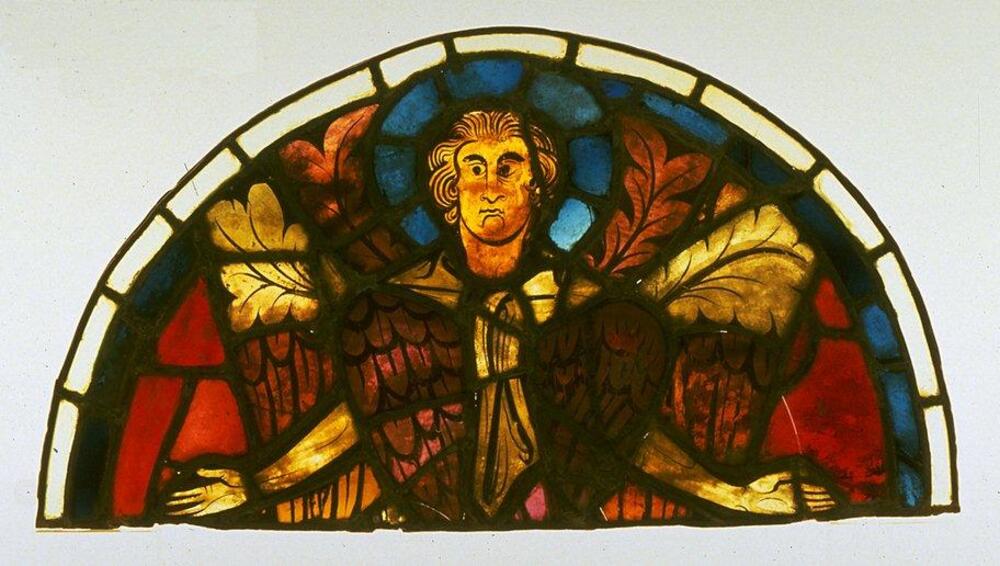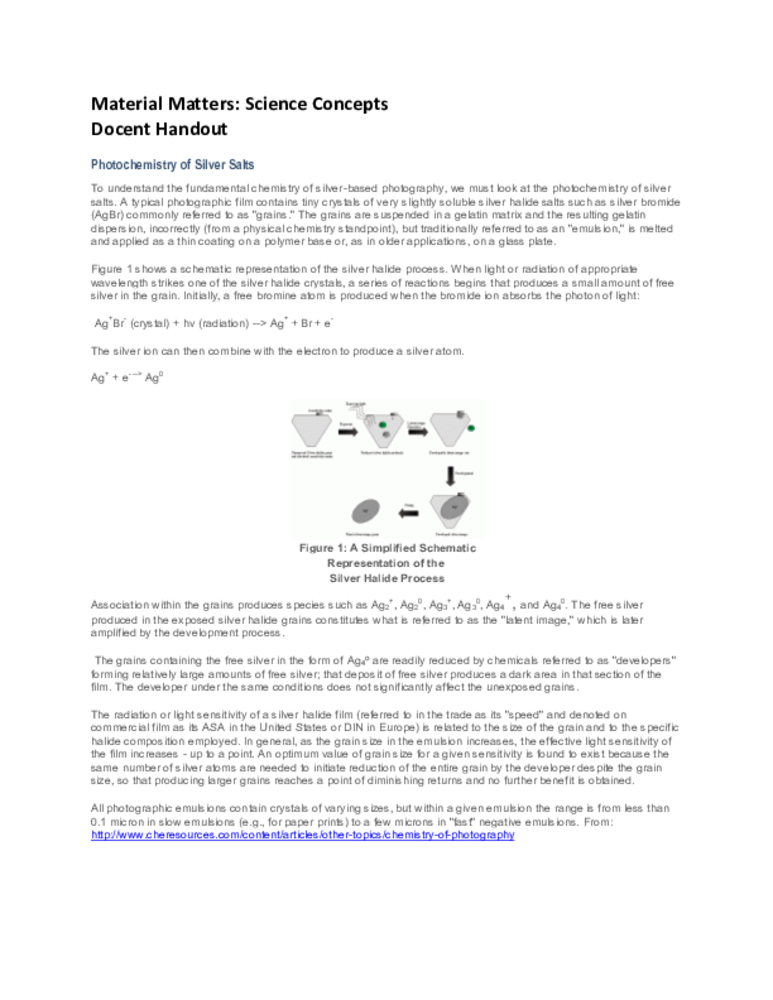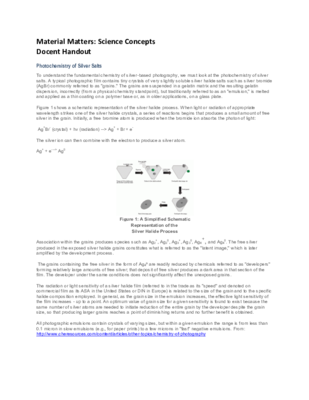Fourth Grade: Material Matters
Docent Curricular Tour
Discussion: In order to understand the properties of matter scientists have to observe, ask questions based on their observations, and measure them in a variety of ways. In order to make art, artists do similar things. They have to know the properties of the materials they use and do a lot of problem solving to make the art they want to make. In this tour, children will explore the properties of matter and why artists would want to use specific materials to create the particular art they made. Sometimes artists change the properties of matter—from a solid to a liquid, for example—to get them to do cool, artistic things. Tools that are used to measure matter or the changes in matter can be used as props.
Science Concept: Materials can be described in terms of their properties; Properties can be measured using tools (always note the units!); Investigative questions…basic elements of science. Field guides used to identify…
S.IP.04.11 Make purposeful observation of the natural world using the appropriate senses
S.IP.04.12 Generate questions based on observations.
S.IP.04.13 Plan and conduct simple and fair investigations.
S.IP.04.14 Manipulate simple tools that aid observation and data collection (for example: hand lens, balance, ruler, meter stick, measuring cup, thermometer, spring scale, stop watch/timer, graduated cylinder/beaker).
S.IP.04.15 Make accurate measurements with appropriate units (millimeters centimeters, meters, milliliters, liters, Celsius, grams, seconds, minutes) for the measurement tool.
Art Concept: Use a descriptive vocabulary to discuss the visual and tactile qualities in a work of art and interpret the meaning conveyed.
ART.VA.I.4.3 Analyze and reflect on the elements of art and design to communicate ideas.
ART.VA.II.4.1 Synthesize the use of a variety of materials, techniques, and processes to problem solve in the creation of art.
ART.VA.II.4.4 Analyze and reflect on the uses of subject matter, symbols, and ideas to express and communicate meaning in artwork.
ART.VA.IV.4.1 Describe how artwork communicates facts and/or experiences of various cultures.
Stop 1: Orion Sculpture
Docent Prep: DURING A DAY GROUP PLANNING MEETING, WATCH THIS VIDEO:
http://www.youtube.com/watch?v=F6fltSqImFM
Engagement Strategy
This is a very tall sculpture named Orion. What properties of matter/of its material make it so stable and let the artist build it so tall? Could you make Orion with spaghetti? Playdoh? Legos? What properties does steel have that make this sculpture possible that playdoh doesn't have?
Talking Points
· This piece is very tall! Why would steel be a good material to make such a tall piece?
· For fun, let’s measure how tall this is. (use youtube link above for discussion of how to do this)
· Look carefully at the material that makes this sculpture. Ping it with your fingers, knock on it. How would you describe the visual and tactile qualities of steel?
· What are some things about Orion we could measure? [let them name a few: weight? Temperature? electrical conductivity?]
· Some of those measurements would require special instruments but there is one measurement we can make with just our hands and feet. [Measure the height using your hand and pacing it off as in Youtube video link above.]
· Do you think you could bend this metal? How? What equipment would be required to move or bend this piece? [SHOW iPAD VIDEO OF SPEEDED UP INSTALLATION OF DISUVERO PIECE.]
· Discuss meaning of the name of Orion. Show constellation.
· The artist used steel to make something that looks like a constellation. Why? [constellations are big, steel is strong enough to make some thing really tall…just an idea… I don’t know if diSuvero considered this.]
Stop 2: China, Fang Ding
· Can anyone guess what this is made of? Bronze. Bronze is an alloy [a mixture of metals consisting primarily of copper, usually with tin as the main additive. It is hard and tough and it was so significant in antiquity that the Bronze Age was named after it.] The metals in bronze are similar to the metals in a penny (show penny).
· How do you think the artists made this? What kind of actions would you have to take to make this? [Carving? Gluing? Welding?]
· Imagine you have a big block of stone. How would you get it to look like this? It would be hard to carve stone in this fine detail? What about wax? It would be easy to carve but it might melt.
· Bronze is interesting because it can be hard like stone but when you heat it, it becomes a liquid and can be poured into a mold. [The melting temperature of bronze is between that of tin and copper based on the amount of each in the alloy, usually around 1750 F or 950 degrees C. ]
· The mold has designs in it and the liquid bronze oozes all around them so when the bronze cools, the designs appear in the bronze vessel. Compare jello mold.
· The artists who made this had to change the properties of matter: they heated it to such a high temperature that it melted. In the liquid state they could pour the bronze into a mold and when it cooled it turned back into a solid.
· Prop: thermometer. Ask children at what temperature they start to feel hot. Imagine how hot it would have to be to melt bronze!
· The designs on this Fang Ding are called taotie. Show picture of a taotie and The Taotie is a mysterious monster in ancient Chinese mythology. It is said that the monster was extremely greedy and would eat anything within its sight. To symbolize this, pictures of the taotie are just a big head and a big mouth without a body. The monster became a symbol of greediness and was used to describe people who were too gluttonous or too greedy. The taotie motif is often found on ritual vessels of the Shang and Zhou Dynasties. Things adorned with such a motif have a deterrent effect, symbolizing the power of a ruler.
The artist used bronze to make a bowl for food and put a monster on the outside who is know for being a food glutton. Why?
Stop 3: Abstract Form by Peter Voulkos
· What is this made of? Clay. Show bag of clay.
· When you buy clay, you buy it by the pound like bananas or apples. What instrument do you use to measure weight?
· Show a small food scales.
· Large pieces like this or big pots could require as much as 60 pounds of clay! Ask children how much they weigh… approximatley. 60 pounds could be more than some of them weigh.
· How do you change soft clay into a solid like this? Heat. Compare making a cake: gooey cake batter becomes solid cake after you cook it.
When you add heat to bronze it turns into a liquid but when you add heat to clay it turns into a solid.
Stop 4: Any photograph made with silver, New Photography Gallery
Prop: old piece of tarnished silver
· If you stand in a very dark room that has a tiny pin-prick of a hole in one wall, a picture of the outside world will be projected on the opposite wall. Did you know that? It is true and it is cool
· Before the 19th century people had tried to capture that image and make it permanent but it took a long time to figure out how to do that. How would you try to capture that picture? [people did trace these drawings]
· Photography was “invented” in 1839 when they discovered a way to trap these pictures. Do you know what they used? -----Silver.
· Did you know that when silver is left out for awhile it turns black?
Silver is stable in pure air and water but it tarnishes upon exposure to ozone, hydrogen sulfide, or air containing sulfur. Silver undergoes a chemical reaction with sulfur-containing substances in the air. Silver combines with sulfur to form silver sulfide, which is the black tarnish you find on silver. See footnote for more details about the chemistry of photography.[i]
If you put powdered silver—called a silver salt—in a liquid then paint it on paper then expose it to light, the areas that receive the most light turns dark fastest.
After you make this exposure you can use this piece of paper as a “negative.” Place it over another piece of silver-coated paper, expose it to light, and the areas that were darkest end up being lightest—as they were in the original subject being photographed.
Photographers and artists can use knowledge of how chemical changes happen in materials to their advantage when they make art. See Material Matters: Science Background .pdf handout for more information
Be sure to also talk about the content of the photograph…
Stop 5: Stained glass Angel
Engagement Strategy: Here is a mystery about this window. How can this glass window be about the heavens and earth at the same time?
Talking Points
· First let’s think about how glass is made. Does anyone know how glass is made? Yes, it is a big molten blob. But, what is in the blob? One of the main ingredients is sand! Sand has small bits of quartz, which is made of silica. When it is melted with some other ingredients, it becomes molten glass.
· What color is quartz? [pink or clear] What color is this window? How do artists make glass, made up of very lightly colored quartz, so colorful? They have to add something. Many minerals have colors and when added to molten glass they turn the glass into these magnificent colors [see chart below for some examples of the colors minerals make].
· When sand and minerals are mixed together and heated up their properties change. The go from being dry, salt-like solids, to beautiful colored, transparent glass.
· So, this window is made of sand and minerals, all coming from the earth.
· Because stained glass was both transparent and colored, it was believed to mediate between the heavenly and earthly. Light passing through glass intact was a miraculous property. Thus, people in the Gothic period, thought stained glass in itself had a heavenly quality and they wanted to have lots of stained glass in their cathedrals.
· In this window, the subject is heavenly, also. It is an angel called a Seraph. At this time, people believed there were several kinds of angels and Seraphim were one variety.
· So, this glass is made of the earth and the heavens at the same time.
Download the Material Matters: Science Concepts Handout for more detailed information.
See "What's the Matter?" chart (PDF handout) to guide tour activity
Part of 1 Learning Collection
<p>Docent Curricular Tour</p>
Rate this Resource
AVG: 0 | Ratings: 0
& Author Notes
Creative Commons by-nc-saLast Updated
November 6, 2018 2:40 p.m.Report
Reporting Policy

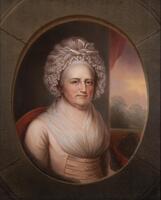
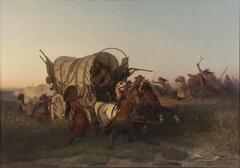
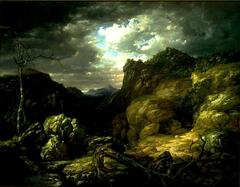
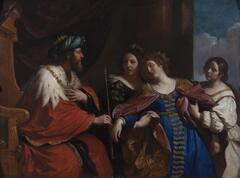

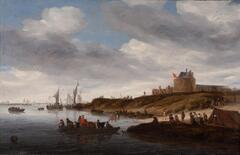

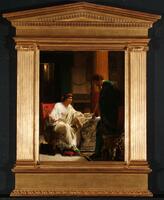
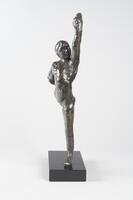
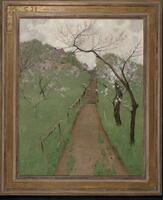
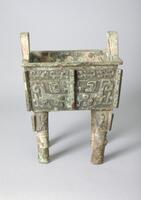
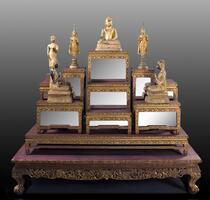
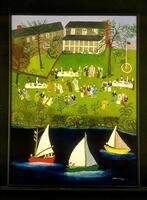
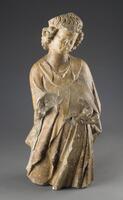
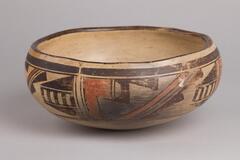
![<p>This celadon bowl is decorated with mold-impressed designs, which was one of popular type of dishes in 11th and 12th centuries. On its inner walls are lotus scroll designs, and on its inner base is what is presumed to be a lotus flower design. Glaze has been applied all the way down to the rim of the foot, which retains traces of silica supports in three places. The yellow-green glaze is evenly spread on the surface, while the clay is of specially selected high quality, producing a smooth surface.<br />
[<em>Korean Collection, University of Michigan Museum of Art</em> (2014) p.111]</p>
<br />
shallow lobed bowl with molded lotus design on wall, 6 lobes, very small foot, high quality, need cleaning <p>This celadon bowl is decorated with mold-impressed designs, which was one of popular type of dishes in 11th and 12th centuries. On its inner walls are lotus scroll designs, and on its inner base is what is presumed to be a lotus flower design. Glaze has been applied all the way down to the rim of the foot, which retains traces of silica supports in three places. The yellow-green glaze is evenly spread on the surface, while the clay is of specially selected high quality, producing a smooth surface.<br />
[<em>Korean Collection, University of Michigan Museum of Art</em> (2014) p.111]</p>
<br />
shallow lobed bowl with molded lotus design on wall, 6 lobes, very small foot, high quality, need cleaning](/media/W1siZiIsIjIwMjIvMDkvMjQvMmx1M2ptNHMzM19kZWZhdWx0LmpwZyJdLFsicCIsInRodW1iIiwiMjQweDIwMCJdXQ?sha=2ba2ecc35e4531c3)
